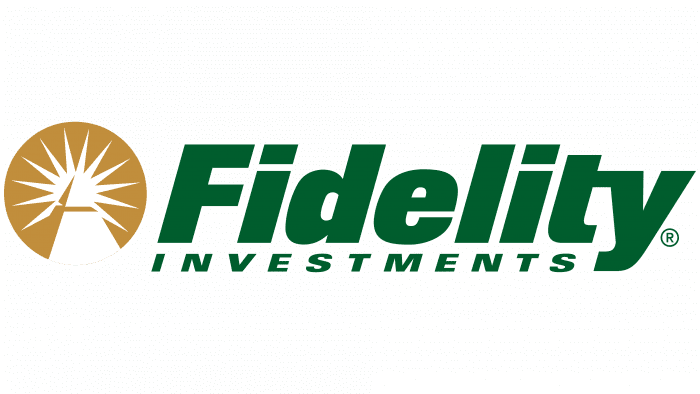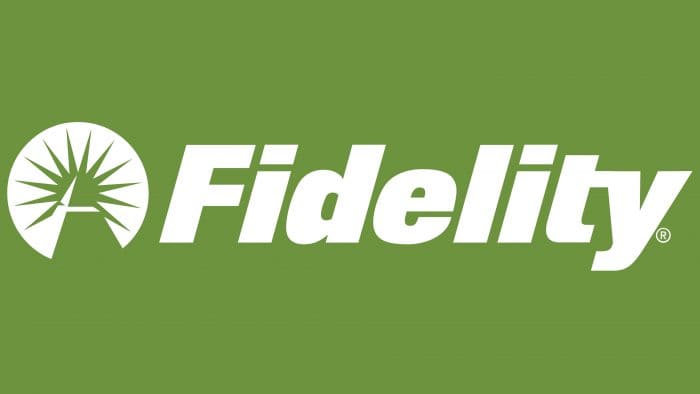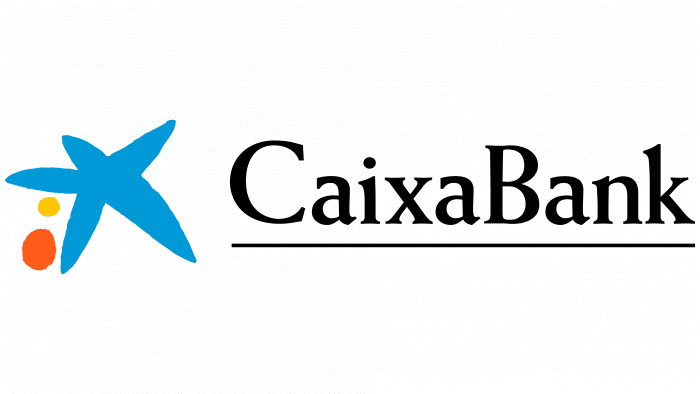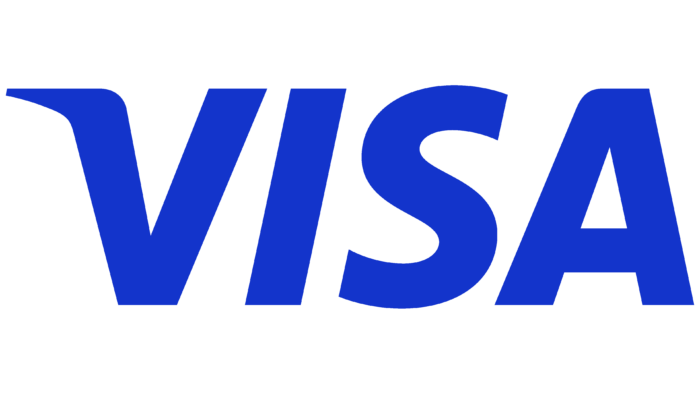The Fidelity logo says that the corporation is strong and rich, like a reliable and stable golden pyramid, the top of which has reached heaven. All operations of the company bring financial profit. From the emblem comes the message of development and growth.
Fidelity: Brand overview
| Founded: | 1946 |
| Founder: | Edward C. Johnson II |
| Headquarters: | Boston, Massachusetts, U.S. |
| Website: | fidelity.com |
Meaning and History
After 23 years of operation of the financial company Fidelity Management & Research (as it was called at the very beginning), it has a Fidelity International Limited division with a specialization in serving foreign markets far outside the United States. In 1980, the corporation separated it into an independent structure.
In 1993, the organization approved a new emblem, which remains relevant to this day. In 2011, the company underwent a rebranding. The reason for this was the renaming of the Fidelity International department to Fidelity Worldwide Investment and the increase in legal status. A year after expanding its financial services, the corporation moved to its current Boston headquarters.
What is Fidelity?
Fidelity is the abbreviated name of the American financial holding Fidelity Investments Inc., which was known as Fidelity Management & Research in the past.
According to experts, the current Fidelity personal identification badge’s design suggests a connection with the Freemasons. This is confirmed by the special elements used in the logo. First, it is the outline of the pyramid. Secondly, the Eye of Providence motives. Together they form a powerful image that attracts cash flow. After all, approximately the same image is on the reverse side of the Great Seal of the United States and dollar bills. That is, the icon directly declares the desire of the financial institution to earn big.
The corporate identity is a harmonious combination of graphic and text elements. The first is a round icon with a pyramid with a separate top. Behind it is a shining sun with twelve long rays. They are sharp and extend almost to the outer edge. Moreover, both images are created thanks to only two colors with the correct grouping of shadows.
On the right is the name of the investment corporation, which takes two lines. The upper one contains the word “Fidelity” in large letters with a slight slope. In this case, the inscription consists of uppercase and lowercase characters, meeting the spelling rules. Its distinctive feature is the connected “y” and “t.” The second line includes the word “Investments,” which is included in the financial institution’s full name. Although it is written in small letters, they are all in uppercase and sloped to the right.
Fidelity Investments: Interesting Facts
Fidelity Investments, founded in 1946 by Edward C. Johnson II, is a well-known financial services company that offers various investment and retirement planning services.
- Origins and Ownership: Starting with Edward C. Johnson II, Fidelity remains privately owned by the Johnson family, focusing on long-term growth over short-term earnings.
- Mutual Funds Innovator: Fidelity pioneered mutual funds, offering the public access to investment opportunities. Its Magellan Fund, launched in 1963, became very successful under Peter Lynch’s management.
- Retirement Planning Leader: Managing a large share of U.S. 401(k) assets, Fidelity provides comprehensive tools and resources for retirement planning.
- Innovative Services: Known for innovation, Fidelity launched one of the first mutual fund websites in 1995 and continues to use technology to enhance customer service and expand offerings.
- Worldwide Operations: Based in Boston, Massachusetts, Fidelity serves clients globally, allowing it to offer diverse investment opportunities.
- Philanthropic Efforts: Fidelity’s Charitable Gift Fund, established in 1991, is one of the largest charitable organizations in the U.S., facilitating donor-advised funds for easier charitable giving.
- Financial Literacy Advocacy: Fidelity supports financial literacy with programs that educate people on saving, investing, and managing money, aiming to empower informed financial decisions.
- Direct Indexing Services: Offering direct indexing, Fidelity allows investors to own stocks directly, offering personalized investment strategies and potential tax benefits.
- Cryptocurrency Initiatives: With Fidelity Digital Assets launched in 2018, Fidelity entered the cryptocurrency space, providing institutional investors with custody and trading services.
- ESG Investing Options: Fidelity offers ESG investment choices, including focused mutual funds and ETFs, for those who want to invest according to their ethical, social, and environmental values.
Fidelity Investments stands out for its innovation, comprehensive services, financial education, and ethical investing efforts, making it a major player in the financial industry.
Font and Colors
The text portion consists of a combination of upper and lower case characters. In the first word, the letters are wide, smooth, bold in type from the Sans Serif category. The legs have the correct shape of vertical rectangles. The last two letters are connected at the level of the crossbar “t,” which harmoniously goes into “y.” The lower inscription is small, with wide intersymbol spacing, extended almost along the upper word’s entire length.
The corporation has attached great importance to color. To attract finances, she chose two monetary palettes for her logo. The first color is green, like on dollar bills. The second is yellow, like on gold bars. According to experts, this combination is good for attracting customers’ attention.
FAQ
What is the symbol for Fidelity Investments?
Fidelity Investments, known as Fidelity, does not have a stock symbol. It is a privately held company, so its stocks are not available for public trading on stock exchanges.
Fidelity is one of the largest asset management firms in the world. It offers various financial services, including mutual funds, retirement planning, and brokerage services. The brand is well-known for its investment management and financial planning services.
Fidelity National Financial, Inc. (FNF) is a different company with a stock symbol. It is publicly traded on the New York Stock Exchange (NYSE) under the FNF ticker. This company focuses on title insurance and settlement services.
It’s important to understand that these two companies are separate entities. Even though their names are similar, they operate in different financial industry sectors.
What makes Fidelity Investments unique?
Fidelity Investments is unique in the financial industry for several reasons. Its status as a privately owned company allows it to focus on long-term benefits for its investors rather than short-term gains.
The brand offers various financial services, including mutual funds, retirement planning, and brokerage services. This variety helps investors find products and services that fit their needs.
Customer service is a high priority for the company. The company aims to offer personalized support and guidance to its clients, helping them navigate their financial journeys confidently. The brand has a long history of stability and performance in the financial industry, which builds investor confidence.
What is the Fidelity logo?
The logo has the phrase “Fidelity INVESTMENTS” in bold italic font. Next to this text is a circle emblem. Inside the circle are two symbols: the Eye of Providence and an Egyptian pyramid linked to Freemasonry.
The Eye of Providence, or the all-seeing eye, symbolizes watchfulness and protection. It resembles an eye within a triangle and radiates light.
The Egyptian pyramid in the logo stands for stability and longevity. Pyramids are known for their strength and lasting presence, suggesting that the brand aims to provide a stable and enduring foundation for investors’ financial futures.
Who is Fidelity owned by?
Fidelity is a privately held company. Employees own 51% of the shares, which helps the brand focus on long-term goals and align with employee interests.
The rest of the shares belong to Abigail Pierrepont Johnson and her family. Abigail Johnson, an American businesswoman, is the chairman and CEO of the brand. She follows the legacy of her father and grandfather, who founded the company.
The Johnson family’s involvement has spanned generations, providing stable and consistent leadership. This family ownership supports the brand’s long-term vision and success.
What is a Fidelity Investment Account?
A Fidelity investment account lets users trade stocks and access various investment options, such as bonds, mutual funds, and ETFs.
This account offers several benefits. Users can buy and sell stocks, use research tools, and access market insights. The brand provides different account types for various investment goals, such as individual, joint, and retirement accounts like IRAs.
Investors can manage their accounts online or through mobile apps, making monitoring and adjusting portfolios easy. The brand offers educational resources to help users understand investing basics, market trends, and strategies for building a diversified portfolio. Customer service is a key feature, with phone, email, and live chat support.
Is Fidelity an investment bank?
No, it is not an investment bank. Fidelity Investments Inc. is an asset management firm that offers services such as mutual funds, retirement planning, brokerage services, and wealth management.
Investment banks handle underwriting, mergers, and acquisitions and provide advisory services for companies. They also help companies raise capital by issuing stocks or bonds. Examples of investment banks are Goldman Sachs and Morgan Stanley.
The company focuses on managing investments for individual and institutional clients. The brand offers products and services to help clients reach their financial goals, such as managing mutual funds, providing brokerage accounts, and giving financial planning advice.






